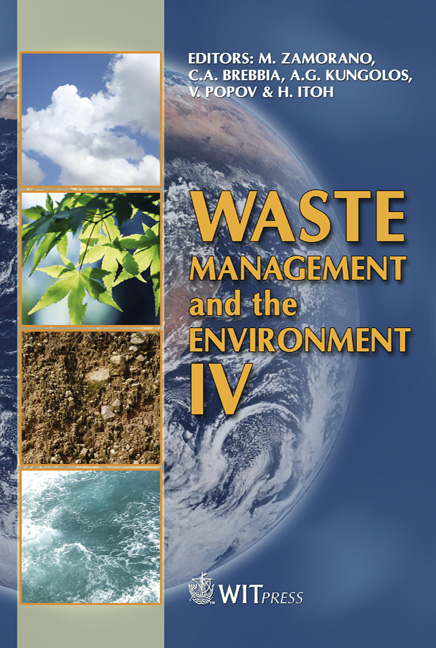Physical And Chemical Properties Of Fuel Containing Animal Waste
Price
Free (open access)
Transaction
Volume
109
Pages
9
Page Range
69 - 77
Published
2008
Size
364 kb
Paper DOI
10.2495/WM080081
Copyright
WIT Press
Author(s)
M. Wzorek
Abstract
The paper includes the results of research devoted to the application of meat and bone meal (MBM) as a component of granulated alternative fuel for use in the cement industry. This paper presents the composition of the fuel along with the method of its production. The paper later undertakes an analysis of chemical and physical characteristics of the resulting fuel with a particular emphasis on the combustion properties, content of noxious substances and strength prosperities. Keywords: animal by-products, meat and bone meal, alternative fuels, cement industry. 1 Introduction Animal by-products generated by the food industry require the application of special treatment techniques due to the hazard they pose to the environment. Because of bacteriological hazard, the intensive, foul smell and difficulties in storing, it is necessary to ensure its fast utilization. In the utilization plants the animal by-products undergo the processes of grinding, drying, sterilization and degreasing, which result in the formation of animal meal and fats. In Poland the total mass of 685,000 tons of animal waste undergoes utilization; however, forecasts say that the volume may reach 770,000 tons within the next 5 to 7 years [1]. The quantity of the generated animal by-products in the selected European states is presented in Fig. 1. Depending on the type of the utilized waste, it gives origin to a variety of animal meals: bone meal, meat meal, bone and meat meal, poultry meal and fish meal.
Keywords
animal by-products, meat and bone meal, alternative fuels, cement industry.





